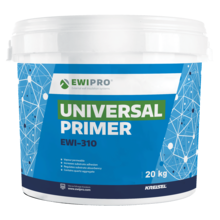
We all know how hot weather affects us. We feel sluggish and can barely bend down without breaking a sweat, your throat feels dry no matter how much you drink and the mere act of existing becomes exhausting. But, how does the heat affect the rendering process?
In this blog, we will cover the issues with rendering in hot weather, and our top tips to overcome them. To all those rendering out there in this blistering heat, we salute you!
Pinholes
We sometimes receive complaints from homeowners regarding how their render has dried; the most common complaint is the appearance of pinholes caused by the render drying too fast. Normally, the cause of this is due to applying render in too hot weather conditions or in direct sunlight.
All renders have specific temperature margins and, when not applied within these margins, the product will not perform at its best. These temperature margins tend to be around 5˚C – 25˚C but, with all the different render options out there, the margins will vary from product to product. It is good practice to always check your product packaging to determine its specific temperature requirements.
Switching to a different render product is not a good solution to this problem because pinholes affect most types of render. On top of this, you will lose all of the product-specific benefits, for example, a silicone render is extremely flexible, breathable and hydrophobic, unlike many other renders.
There are no long-term side effects or damage to your property that can occur with pinholes; the problem is purely visual. If you can avoid pinholes by following the advice of this blog, you will notice all the wonderful advantages to rendering your property. Check out our blog The Benefits of Using Silicone Render to learn more.
Renders are bound to dry at accelerated rates in extreme heat, therefore increasing the likelihood of pinholes. However, hope is not all lost as we have a method to prevent this.
Using a render primer reduces the chances of pinholes occurring. This is because basecoat is very dry and porous and will absorb moisture from the render very quickly. Render primer, however, prevents this from happening by creating a barrier between the basecoat and render. We recommend applying two coats of render primer; this increases the strength of this barrier, further preventing the basecoat from absorbing moisture from the render.
Uneven texture
It can take four people over three hours to apply render on a 200 square meter surface. If you don't have enough time to apply the render, you may rush the application and not be able to use the correct technique; this may result in an uneven textured finish, which can create the illusion of discolouration. The correct way to apply the render is in circular motions, not in strips; this will help you create that smooth and uniform texture that you desire.
If you must complete your project in the peak of summer, the key is to get up as early as possible and get going! We have seen many installers start the process as early as 5 am – it may be hard to drag yourself out of bed, but it will definitely be worth it in the long run. Where possible, avoid applying render in the middle of the day as this is when the sun is at its hottest. Many of our installers work by avoiding the sun and following the shadows. This means they will only apply the render on the shadowed areas; as the angle of the sun changes, these shadows will move and so should you! This means you can keep applying your render whilst out of direct sunlight.
The best solution to both aforementioned issues is, of course, to apply the render within the correct temperature margins.
Tips for Your Health
Remember what I said earlier about a dry throat? In this heat, it is crucial to stay hydrated. Without sufficient hydration, you are putting yourself at risk of lethargy and headaches. Lack of hydration, especially in such labour intensive work, could even cause you to pass out! Consider bringing a fridge on-site for the duration of the project and make sure to keep it fully stocked with water.
Avoid caffeine because this can be extremely dehydrating. If you really need your morning coffee boost, ensure you are drinking enough water to compensate.
Keep your clothes on! We know how tempting it can be to take your shirt off, especially when you can feel yourself cooking and getting all stuck to your sweaty clothes however, this is not a wise move. By removing your shirt, you are leaving yourself open to sunburn. We instead recommend wearing light coloured cotton shirts because this will keep you cool whilst keeping the sun off your back. If you really can't resist then make sure you are regularly applying suncream.
Working in such hot conditions can have more serious consequences if you don't take the correct precautions. Make sure to keep out of the sun whenever possible, and take regular breaks in the shade. If you are not careful, you could end up with heatstroke which can cause permanent damage to your vital organs.
Top Tips Summary:
- Use a render primer
- Follow the shadows
- Stay hydrated
- Stay away from caffeine
- Keep your shirt on
- Keep out of the sun
If you enjoyed our top tips for rendering in hot weather, be sure to check out our top tips for rendering in winter blog! Or, find out the best render we recommend you use in spring here!

[contact-form-7 id="10930" title="Installer Request Form Blog"]


